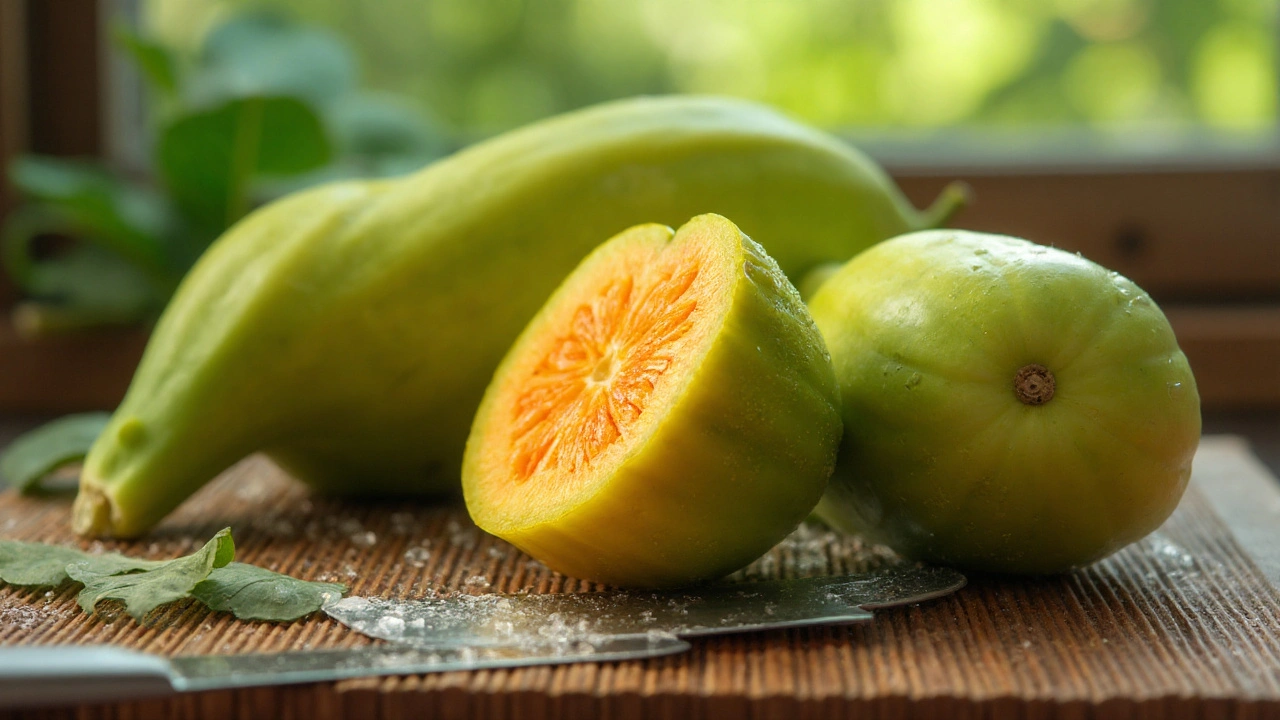How to Grow Bitter Melon at Home: Simple Guide for Beginners
If you’ve ever wondered why bitter melon shows up on restaurant menus and health blogs, the answer is simple: it’s tasty, cheap, and packed with nutrients. Growing it yourself takes only a few basic steps, and you don’t need a large garden. Even a balcony or a small backyard can do the trick.
Starting Your Bitter Melon Garden
First, pick the right variety. Look for seeds labeled “Thai” or “Indian” if you like the classic bitter flavor. Soak the seeds in warm water for 8‑12 hours – this wakes them up and speeds up germination.
Prepare a well‑draining soil mix. A 1:1 blend of garden soil and compost works fine, but add a bit of sand if the soil stays soggy. Bitter melon loves warm soil, so aim for a temperature around 75°F (24°C) before planting.
Plant the seeds ½ inch deep, spacing each about 12‑18 inches apart. If you’re using a container, choose a pot at least 12 inches wide and fill it with the same soil mix. Water gently until the soil is moist, then keep it consistently damp until sprouts appear – usually in 5‑7 days.
When the seedlings have two true leaves, thin them so only the strongest plant stays per spot. This gives each vine room to spread, which is crucial because bitter melon is a climbing plant.
Caring for Your Plants and Harvesting
Provide a sturdy trellis or fence. Bitter melon vines can grow 6‑10 feet, and they need support to climb. Simple bamboo poles or a wire net make great trellises. Tie the vines loosely with garden tape.
Water the plants deeply once or twice a week, depending on weather. The soil should stay moist but never waterlogged. Mulching with straw or dried leaves helps keep the moisture steady and reduces weeds.
Feed the vines with a balanced fertilizer every 4‑6 weeks. A liquid fish fertilizer works well and adds extra nitrogen for healthy leaf growth.
Watch out for pests like aphids, spider mites, and whiteflies. A quick spray of soapy water or neem oil keeps them under control without harming the plant.
The fruit appears about 45‑60 days after planting. Pick the bitter melons when they’re about 4‑6 inches long and still firm. If you wait too long, they become overly bitter and tough.
After harvest, wash the melons and store them in the fridge for up to a week. You can also slice them, add a pinch of salt, and let them sit for 20 minutes to reduce bitterness before cooking.
Aside from the taste, bitter melon is known for its health perks. It contains compounds that help regulate blood sugar, support digestion, and boost immunity. Adding a handful of cooked bitter melon to your meals can give you a natural nutrient boost.
Ready to start? Grab some seeds, set up a small trellis, and follow these steps. Within a couple of months you’ll have fresh, home‑grown bitter melon ready for stir‑fries, soups, or salads. And if you want more ideas, check out the other articles on our site for deeper dives into nutrition, recipe ideas, and advanced gardening tricks.
Karela (Bitter Melon) Benefits, Nutrition, and Easy Recipes
Discover what karela is, its powerful nutrition, simple ways to store and cook it, plus beginner-friendly tips for growing your own bitter melon at home.
Learn more...